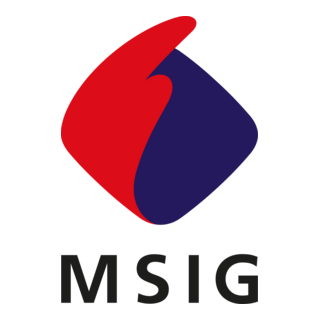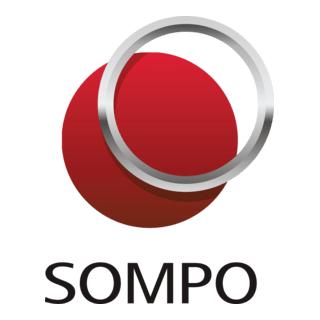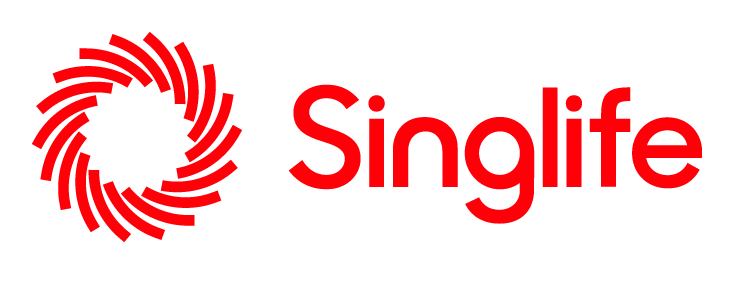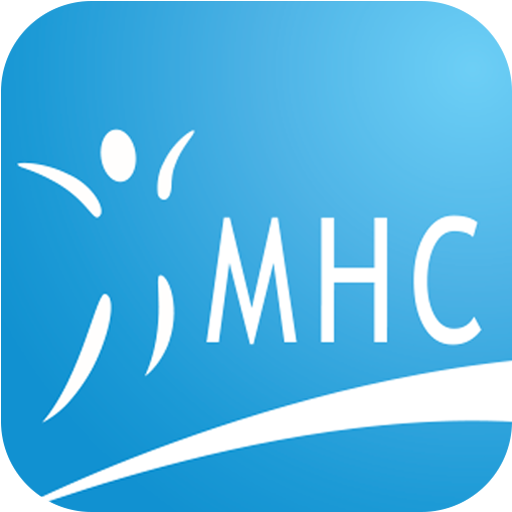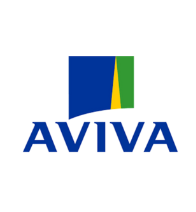Procedures
Home / Service Detail
Gastroscopy, also known as an upper GI endoscopy; is a medical procedure used to examine the upper part of the digestive system, including the oesophagus, stomach, and the first part of the small intestine (duodenum). It is performed using a thin, flexible tube called an endoscope, which has a light and camera at its tip.
When do I need the procedure
Gastroscopy is commonly used to:
- Investigate symptoms like persistent indigestion, heartburn, abdominal pain, or difficulty swallowing.
- Diagnose conditions such as ulcers, gastritis, or stomach cancer.
- Take biopsies or treat certain conditions, like removing polyps or stopping bleeding.
What do I expect
- Preparation: Patients are usually required to fast for several hours before the procedure.
- During the Procedure: A local anaesthetic spray and mild sedation may be used. The endoscope is gently inserted through the mouth and guided down the digestive tract.
- After the Procedure: Patients may experience mild bloating or a sore throat, but these usually resolve quickly.
After the procedure
After a gastroscopy, patient will be resting in a recovery area or room in the hospital, where medical staff will continue to monitor you until the effects of the anaesthesia have worn off. The staff will also provide light refreshments and ensure the patient is ready to be discharged. It was strongly encouraged that a family member is to be with patient during the discharge process and accompany the patient home. Once the laboratory results are ready, our nurse will contact you to arrange for follow-up appointment with your doctor to review the procedure, discuss the findings, including any biopsy results, and outline an appropriate management plan moving forward.
Proper aftercare at home is crucial for a smooth recovery. Here are some general guidelines:
- Rest: If you were sedated, rest at home for the remainder of the day. Avoid driving, operating machinery, or making important decisions for at least 24 hours.
- Hydration: Drink plenty of fluids to stay hydrated. Start with small sips of water and gradually increase as you feel comfortable.
- Diet: Avoid eating or drinking until your throat feels normal again, which usually takes about 45 minutes. Begin with soft, bland foods like soup or mashed potatoes if your throat is sore.
- Throat Care: A sore throat is common. Sucking on ice chips, throat lozenges, or gargling with warm salt water can help soothe discomfort.
- Monitor Symptoms: Mild bloating or gas is normal, but contact your doctor if you experience severe pain, vomiting, fever, or difficulty breathing.
If you have specific concerns, feel free to contact our centre for further advice.
Safety of the procedure
Gastroscopy is generally safe, but there are minimal risks, such as bleeding or perforation, especially if a biopsy is taken.
Cost for the procedure
- A gastroscopy is a hospital procedure;it is covered under most hospitalization plans.
- The procedure is also Medisave deductible. Most of the companies’ health benefits and private health insurances cover the cost of the procedure, which may extend to the private hospitals.
- The fee benchmarks on the procedure done in different hospitals can be found in the website of Ministry of Health Singapore.
- Before the endoscopic procedure, a detailed financial counselling will be done to help the patients understand the cost breakdown in the preferred hospital.
- Patients should also check with their insurance provider on the updated policy regulations before the procedure.
A colonoscopy is a medical procedure used to examine the inner lining of the colon and rectum. It’s often performed to investigate gastrointestinal symptoms, screen for colorectal cancer, or monitor conditions like polyps or inflammatory bowel disease (IBD).
When do I need to do the procedure
- Screening: Detects and removes polyps before they develop into cancer.
- Diagnosis: Investigates symptoms like bleeding, abdominal pain, or changes in bowel habits.
- Treatment: Removes polyps or abnormal tissue and addresses bleeding areas.
What do I expect
- Preparation:
- Patients follow a clear liquid diet and take a prescribed bowel prep to clean the colon.
- During the Procedure:
- A sedative is typically given for comfort.
- A thin, flexible tube (colonoscope) with a camera is inserted into the rectum to examine the colon.
- A polypectomy may be performed during colonoscopy to remove the polyps in the colon. These usually involve a snare that is passed through an instrument channel in the colonoscope. A snare polypectomy can either be performed with or without an electric current passing through it. Generally, smaller polyps less than 10mm can be resected using cold snare polypectomy.
- After the Procedure:
- Patients may feel bloated or pass gas.
- The resected polyps will be sent to the laboratory for histological examination to determine what type of cells make up the polyps and to grade the degree of dysplasia or the presence of cancer.
- Results will be reviewed by the doctor usually within a week when the reports are ready by the laboratory.
After the procedure
After a colonoscopy, patient will be resting in a recovery area or room in the hospital, where medical staff will continue to monitor you until the effects of the anaesthesia have worn off. The staff will also provide light refreshments and ensure the patient is ready to be discharged. It is strongly encouraged that a family member is to be with patient during the discharge process and accompany the patient home. Once the laboratory results are ready, our nurse will contact you to arrange for follow-up appointment with your doctor to review the procedure, discuss the findings, including any biopsy results, and outline an appropriate management plan moving forward.
Proper aftercare at home is essential for a smooth recovery. Here are some general guidelines:
- Rest: Take it easy for the rest of the day. Avoid strenuous activities like heavy lifting or exercise for at least 24 hours.
- Hydration: Drink plenty of fluids to replenish what was lost during bowel preparation. Water, clear broths, or electrolyte drinks are great options.
- Diet: Start with light, easily digestible foods such as soup, toast, or crackers. Gradually reintroduce solid foods, avoiding anything spicy, greasy, or high in fiber for the first day.
- Driving: Do not drive or operate heavy machinery for 24 hours due to the sedatives used during the procedure.
- Monitor Symptoms: Mild side effects like bloating or cramping are common, but if you experience severe pain, persistent bleeding, or fever, contact your healthcare provider immediately.
If you have specific concerns, feel free to contact our centre for further advice.
Safety of the procedure
Colonoscopy is generally considered a safe and effective procedure, especially when performed by experienced specialists. It is a vital tool for detecting and preventing colorectal cancer, as well as diagnosing gastrointestinal conditions.
While complications are rare, they can include:
- Perforation: A small tear in the colon wall, which may require surgical repair.
- Bleeding: Often occurs if a polyp is removed, but it is usually minor.
- Infection: Extremely rare, but possible due to the use of medical instruments.
- Reactions to Sedation: Some individuals may experience nausea or other side effects.
Polypectomy is generally safe. However, it is associated with an overall risk of 1% including thermal injury due to electrocautery, perforation and post polypectomy bleeding. Some of the risk include the use of antiplatelet agents and anticoagulation therapy such as warfarin and also depending on the size of the polyps.
Your doctor will advise you to observe for signs of bleeding, severe abdominal pain or fever. If these happen, it is important to contact the clinic immediately.
Cost for the procedure
- A colonoscopy is a hospital procedure;it is covered under most hospitalization plans.
- The procedure is also Medisave deductible. Most of the companies’ health benefits and private health insurances cover the cost of the procedure, which may extend to the private hospitals.
- The fee benchmarks on the procedure done in different hospitals can be found in the website of Ministry of Health Singapore.
- Before the endoscopic procedure, a detailed financial counselling will be done to help the patients understand the cost breakdown in the preferred hospital.
- Patients should also check with their insurance provider on the updated policy regulations before the procedure.
Piles ligation, also known as rubber band ligation, is a non-surgical procedure used to treat internal haemorrhoids that protrude during bowel movements. It involves placing a small rubber band around the base of the haemorrhoid, cutting off its blood supply. Within a few days, the haemorrhoid shrinks and falls off, with the wound healing in one to two weeks.
When Do I need to do the procedure
- Recommended for second-degree haemorrhoids that cause bleeding, or discomfort.
- Suitable for cases where medications and dietary changes have not improved the condition.
- 8 out of 10 people recover fully after the procedure.
What do I Expect
You will be positioned on your left side, and sedation will be administered. Once you are asleep, the doctor will start the procedure.
- A doctor inserts an anoscope into the anus to locate the haemorrhoid.
- A special instrument grasps the haemorrhoid, and a rubber band is placed around its base.
- The haemorrhoid loses blood supply, dries up, and eventually falls off.
- A scar forms, preventing future bulging of veins into the anal canal.
Rubber band ligation for piles can often be performed alongside a colonoscopy. This approach is practical because both procedures involve the anal and rectal regions, and the preparation for colonoscopy (bowel cleansing) ensures a clear view for both evaluations. Combining the procedures can save time and reduce the need for separate appointments.
However, the decision to perform both together depends on factors like the severity of haemorrhoids, the patient’s overall health, and the doctor’s assessment.
After the Procedure
After rubber band ligation for haemorrhoids, proper aftercare is essential for a smooth recovery. Here are some general guidelines:
- Rest: Take it easy for the first 24–48 hours. Avoid strenuous activities like heavy lifting or intense exercise.
- Pain Management: Mild discomfort is common. Over-the-counter pain relievers or sitz baths (sitting in warm water for 10–15 minutes) can help alleviate discomfort.
- Diet: Stick to a high-fiber diet and drink plenty of fluids to prevent constipation. Consider using a stool softener if needed to avoid straining during bowel movements.
- Hygiene: Keep the anal area clean and dry. Use warm water to gently clean the area after bowel movements and pat dry.
- Monitor Symptoms: Minor bleeding is normal, especially when the haemorrhoid falls off (usually within 7–10 days). However, contact your doctor if you experience heavy bleeding, fever, or severe pain.
- Activity: Gradually resume normal activities as you feel comfortable, but avoid anything that causes strain.
Safety of the Procedure
Rubber band ligation is generally considered a safe and effective procedure for treating internal haemorrhoids. It is minimally invasive, does not require surgery, and has a high success rate. However, like any medical procedure, it carries some risks.
Potential Risks
- Pain or Discomfort: Some patients experience mild pain or a feeling of fullness in the lower abdomen, which usually subsides in a few days.
- Bleeding: A small amount of bleeding may occur 7 to 10 days after the procedure when the haemorrhoid falls off.
- Infection: Rare, but possible. Signs include fever, chills, or worsening pain.
- Straining Issues: Heavy lifting or straining during bowel movements should be avoided to prevent complications.
Effectiveness
- Most patients recover without complications and return to normal activities quickly.
- The procedure is highly effective for second-degree haemorrhoids, with a low recurrence rate.
- It’s common for patients to require multiple sessions of rubber band ligation to achieve optimal results, especially for larger or multiple haemorrhoids. The procedure is effective, but sometimes not all haemorrhoids can be treated in a single session. Typically, 2–3 treatments spaced a few weeks apart may be needed.
- This approach ensures that each haemorrhoid is properly addressed while minimizing discomfort and complications.
Cost for The Procedure
- As ligation of piles is a hospital procedure, the cost is covered by most hospitalization plans.
- The procedure is also Medisave deductible. Most of the companies’ health benefits and private health insurances cover the cost of the procedure, which may extend to the private hospitals.
- The fee benchmarks on the procedure done in different hospitals can be found in the website of Ministry of Health Singapore.
- Before the endoscopic procedure, a detailed financial counselling will be done to help the patients understand the cost breakdown in the preferred hospital.
- Patients should also check with their insurance provider on the updated policy regulations before the procedure.
Radiofrequency Ablation (RFA) is a minimally invasive medical procedure that uses heat generated by radio waves to destroy abnormal tissue. It can be used to treat small liver cancers.
What Do I Expect
- A thin needle or probe is inserted into the targeted area.
- Radiofrequency energy is delivered through the probe, heating and destroying the cancer tissue.
After the Procedure
After undergoing Radiofrequency Ablation (RFA), proper aftercare is essential for a smooth recovery. Here are some general guidelines:
- Rest: Take it easy for the first 24–48 hours. Avoid strenuous activities like heavy lifting or intense exercise.
- Pain Management: Mild discomfort or soreness at the treatment site is common. Use over-the-counter pain relievers or apply ice packs to reduce swelling.
Cost of the procedure
- Radiofrequency Ablation (RFA) is a hospital procedure;it is covered under most hospitalization plans.
- The procedure is also Medisave deductible. Most of the companies’ health benefits and private health insurances cover the cost of the procedure, which may extend to the private hospitals.
- The fee benchmarks on the procedure done in different hospitals can be found in the website of Ministry of Health Singapore.
- Before the endoscopic procedure, a detailed financial counselling will be done to help the patients understand the cost breakdown in the preferred hospital.
- Patients should also check with their insurance provider on the updated policy regulations before the procedure.
Transarterial Chemoembolization (TACE) is a minimally invasive procedure used primarily to treat liver cancer. It combines chemotherapy and embolization to target tumours directly while minimizing damage to healthy tissue.
When Do I Need the Procedure
- Primary Liver Cancer: Often used for hepatocellular carcinoma (HCC) when surgery isn’t an option.
- Metastatic Liver Cancer: Treats cancers that have spread to the liver from other parts of the body.
- Bridge to Transplant: Helps control tumour growth while waiting for a liver transplant.
What Do I Expect
During Transarterial Chemoembolization (TACE), you can expect the following:
- Preparation: Before the procedure, you’ll undergo a pre-assessment, including blood tests and imaging scans. You may need to fast for several hours and stop certain medications. You’ll also receive antibiotics and possibly a sedative.
- Procedure:
- A trained interventional radiologist will perform the procedure in a specialized radiology suite.
- You’ll be given a local anaesthetic to numb the area where the catheter will be inserted (usually the groin).
- Using imaging guidance, the radiologist will insert the catheter into the artery supplying the tumour and deliver chemotherapy drugs along with embolic agents to block the tumour’s blood supply.
- Embolic agents (e.g., tiny beads or gels) are used to block the blood supply to the tumour, trapping the chemotherapy in place and starving the tumour of oxygen and nutrients.
- Duration: The procedure typically takes 1–2 hours, depending on the complexity.
- Post-Procedure: Afterward, you’ll be monitored for a few hours to ensure there are no immediate complications. You may experience mild discomfort or fatigue.
After the procedure
Patients may experience some common side effects, including nausea, pain in the abdomen or right shoulder, fatigue, and fever. Here are some key aftercare recommendations:
- Managing Nausea & Vomiting: Anti-nausea medications may be prescribed. Drinking fluids like water, diluted juice, or sports drinks can help prevent dehydration.
- Pain Management: Pain in the catheter entry siteis common. Prescription pain medication may be necessary.
- Monitoring Fever: A mild fever is expected, but if it exceeds 38°C, medical attention may be needed.
Safety of the Procedure
Transarterial Chemoembolization (TACE) is generally considered a safe and minimally invasive procedure for treating liver cancer and other cancers that have spread to the liver. It delivers chemotherapy drugs directly to the tumour while blocking its blood supply, minimizing systemic side effects.
Benefits
- Targeted Treatment: Chemotherapy is concentrated at the tumour site, reducing exposure to the rest of the body.
- Minimally Invasive: Performed under imaging guidance, it avoids the need for open surgery.
- Preserves Liver Function: The procedure does not significantly affect the liver’s overall blood supply.
- Can shrink tumours, making surgery or other treatments possible.
Risks
While complications are rare, they can include:
- Pain or Discomfort: Temporary soreness or mild pain at the catheter insertion site.
- Infection: A rare possibility at the puncture site.
- Allergic Reaction: Some patients may react to the contrast dye used during the procedure.
- Possible side effects include fever, nausea, or post-embolization syndrome (pain and fatigue).
- Not suitable for patients with severe liver dysfunction or certain other conditions.
Cost of the Procedure
- Transarterial Chemoembolization (TACE) is a hospital procedure, it is covered under most hospitalization plans.
- The procedure is also Medisave deductible. Most of the companies’ health benefits and private health insurances cover the cost of the procedure, which may extend to the private hospitals.
- The fee benchmarks on the procedure done in different hospitals can be found in the website of Ministry of Health Singapore.
- Before the endoscopic procedure, a detailed financial counselling will be done to help the patients understand the cost breakdown in the preferred hospital.
- Patients should also check with their insurance provider on the updated policy regulations before the procedure.
Biliary stenting is a minimally invasive procedure used to treat blockages or narrowing in the bile ducts, which can occur due to conditions like cancer, gallstones, or strictures. A small tube (stent) is placed inside the bile duct to keep it open, allowing bile to flow properly from the liver to the intestines.
When Do I Need the procedure
Biliary stenting is typically needed when there is a blockage or narrowing in the bile ducts that prevents bile from flowing properly. Commonly used for conditions like pancreatic cancer, primary sclerosing cholangitis, or bile duct injuries. Here are common situations where biliary stenting is required:
- Malignant Obstruction: Often used to relieve blockages caused by cancers, such as pancreaticor bile duct cancer.
- Benign Strictures: Treats non-cancerous narrowing of the bile ducts, which can occur due to chronic pancreatitis or gallstones.
- Gallstones: Helps manage complications from gallstones that obstruct the bile duct.
- Post-Surgical Complications: Addresses bile leaks or strictures that may occur after surgery.
- Infections: Used to drain bile in cases of cholangitis (infection of the bile ducts).
The procedure is minimally invasive and helps restore normal bile flow, alleviating symptoms like jaundice, abdominal pain, and nausea.
What Do I Expect
During biliary stenting, you can expect the following steps:
Preparation
- You may need to fast for several hours before the procedure.
- Your doctor might give you antibiotics to prevent infection.
- Endoscopic retrograde cholangiopancreatography (ERCP) is a scope procedure to access the bile duct from the second part of the duodenum.
- Contrast dye is injected to help visualize the blockage.
- A stent (usually plastic) is placed to keep the bile duct open. This helps restore bile flow and prevent complications like jaundice or infection.
- The procedure typically takes 30–60 minutes.
Post-Procedure
- You’ll be monitored for a few hours to ensure there are no complications.
- Mild discomfort or a sore throat is common.
- You may need to stay in the hospital overnight, depending on your condition.
After the Procedure
After biliary stenting, proper aftercare is essential for a smooth recovery. Here are some general guidelines:
- Rest & Monitoring: You usually need to stay in the hospital for a day for observation
- Pain Management: Mild discomfort is common.
- Diet & Hydration: Follow your doctor’s dietary recommendations. Drink plenty of fluids unless advised otherwise.
Safety of the Procedure
Biliary stenting is generally considered a safe and effective procedure for treating bile duct obstructions. It is minimally invasive and helps restore normal bile flow, reducing symptoms like jaundice and abdominal pain.
Potential Risks
- While complications are rare, they can include:
- Infection: A rare possibility, but antibiotics may be given to prevent it.
- Stent Blockage: Over time, the stent may become clogged and require replacement.
- Pancreatitis: In rare cases, irritation of the pancreas can occur.
Benefits
- Quick Recovery: Most patients resume normal activities within a few days.
- Minimally Invasive: No major surgery is required.
- Effective Relief: Helps improve bile drainage and reduces symptoms.
Cost of the Procedure
- Biliary stenting is a hospital procedure;it is covered under most hospitalization plans.
- The procedure is also Medisave deductible. Most of the companies’ health benefits and private health insurances cover the cost of the procedure, which may extend to the private hospitals.
- The fee benchmarks on the procedure done in different hospitals can be found in the website of Ministry of Health Singapore.
- Before the endoscopic procedure, a detailed financial counselling will be done to help the patients understand the cost breakdown in the preferred hospital.
- Patients should also check with their insurance provider on the updated policy regulations before the procedure.
Banding of oesophageal varices, also known as endoscopic variceal ligation (EVL), is a procedure used to treat or prevent bleeding from enlarged veins (varices) in the oesophagus. These varices are often caused by portal hypertension, a complication of liver diseases like cirrhosis.
When Do I Need the Procedure
Patients typically need banding of oesophageal varices when they are at risk of or have experienced bleeding due to enlarged veins in the oesophagus. Here are common scenarios:
- Active Bleeding: If varices rupture and cause life-threatening bleeding, banding is performed as an emergency procedure to stop the bleeding.
- High Risk of Bleeding: Patients with large varices may undergo banding to prevent future bleeding episodes.
- Recurrent Bleeding: For patients who have previously had bleeding from varices, banding helps reduce the risk of recurrence.
What Do I Expect
During banding of oesophageal varices, here’s what you can expect:
Preparation
- You may need to fast for several hours before the procedure.
- Sedation or local anaesthesia will be administered to ensure comfort.
Procedure
- A flexible endoscope with a camera is inserted through your mouth and guided down your oesophagus.
- The doctor uses suction to pull the varices into a specialized banding device.
- Tiny elastic bands are placed around the varices to cut off their blood supply, causing them to shrink over time and the elastic bands are absorbed by the body.
- The procedure typically takes 10–20 minutes and may require multiple sessions for complete treatment.
Post-Procedure
- You’ll be monitored for a short time to ensure there are no immediate complications.
- Mild chest discomfort or throat soreness is common but temporary.
- You may need follow-up appointments to monitor for recurrence or additional treatment.
After the Procedure
After banding of oesophageal varices, proper aftercare is crucial to prevent complications and ensure recovery. Here are some key guidelines:
Immediate Post-Procedure Care
- Rest & Recovery: Avoid strenuous activities for at least 24 hours. You may feel tired, so rest as needed.
- Swallowing Check: Before eating, sip cold water to ensure your swallowing reflex is normal.
- Dietary Adjustments: Start with soft foodsand avoid anything too hot, spicy, or rough-textured to prevent irritation.
Common Side Effects
- Sore Throat & Mild Chest Discomfort: These symptoms should resolve within 24-48 hours.
- Feeling of Something Stuck: This is normal and occurs due to the bands. It should disappear in 2-3 dayswhen the bands fall off.
Activity Restrictions
- No Driving or Operating Machinery: If sedation was used, avoid driving or handling machinery for 24 hours.
- No Heavy Lifting: Avoid lifting heavy objects or engaging in intense physical activity until cleared by your doctor.
When to Seek Medical Help
- Severe Pain: If pain persists despite medication, contact your doctor.
- Vomiting Blood or Black Stools: This could indicate bleeding and requires immediate medical attention.
Safety of the Procedure
Banding of oesophageal varices is generally considered a safe and effective procedure, especially when performed by experienced specialists. It is minimally invasive and has a high success rate in preventing and treating bleeding from varices.
Potential Risks
While complications are rare, they can include:
- Pain or Discomfort: Mild discomfort or sore throat after the procedure, discomfort in the chest.
- Ulcer Formation: The banded area may develop small ulcers, which usually heal on their own.
- Recurrence: Varices can reappear, requiring follow-up treatments.
Benefits
- Life-Saving: Prevents life-threatening bleeding from ruptured varices.
- Treats active bleeding from ruptured varices.
- Reduces the risk of future bleeding episodes.
- Minimally Invasive: No major surgery is required.
- Quick Recovery: Most patients can resume normal activities within a day or two.
Cost of the Procedure
- Banding of oesophageal varices is a hospital procedure, it is covered under most hospitalization plans.
- The procedure is also Medisave deductible. Most of the companies’ health benefits and private health insurances cover the cost of the procedure, which may extend to the private hospitals.
- The fee benchmarks on the procedure done in different hospitals can be found in the website of Ministry of Health Singapore.
- Before the endoscopic procedure, a detailed financial counselling will be done to help the patients understand the cost breakdown in the preferred hospital.
- Patients should also check with their insurance provider on the updated policy regulations before the procedure.
Endoscopic Retrograde Cholangiopancreatography (ERCP) is a specialized procedure used to diagnose and treat conditions affecting the bile ducts, pancreatic ducts, and gallbladder. It combines endoscopy and X-ray imaging for precise evaluation and intervention.
When Do I Need the Procedure
You might need Endoscopic Retrograde Cholangiopancreatography (ERCP) if you have symptoms or conditions related to the bile ducts, pancreatic ducts, or gallbladder. Here are common scenarios:
- Blockages: If gallstones or tumours are obstructing the bile or pancreatic ducts, ERCP can help diagnose and treat the issue.
- Narrowing (Strictures): ERCP is used to widen ducts that have become narrowed due to scar tissue or inflammation.
- Bile Leaks: If bile is leaking from the ducts, ERCP can help locate and repair the problem.
- Pancreatitis: ERCP can address complications like gallstone pancreatitis.
- Unexplained Symptoms: Persistent upper abdominal pain, jaundice, or abnormal imaging results may warrant an ERCP.
What Do I Expect
During Endoscopic Retrograde Cholangiopancreatography (ERCP), here’s what you can expect:
Preparation
- You may need to fast for several hours before the procedure.
- Sedation or anaesthesia will be administered to ensure comfort.
Procedure
- A flexible endoscope with a camera is inserted through your mouth and guided into your small intestine.
- Contrast dye is injected into the ducts to make them visible on X-rays.
- The doctor may perform treatments during the procedure, such as removing gallstones or placing stents.
- The procedure typically takes 30–60 minutes.
Post-Procedure
- You’ll be monitored for a short time to ensure there are no immediate complications.
- Mild throat soreness or bloating is common but temporary.
- You may need follow-up appointments to monitor for recurrence or additional treatment.
After the Procedure
After Endoscopic Retrograde Cholangiopancreatography (ERCP), proper aftercare is essential for recovery and to prevent complications. Here are some key guidelines:
Immediate Post-Procedure Care
- Rest & Recovery: You may feel drowsy due to sedation, so rest for at least 24 hours.
- Dietary Adjustments: Start with clear fluidsand gradually transition to soft foods. Avoid spicy, acidic, or greasy foods.
Common Side Effects
- Sore Throat: This is normal and should resolve in a few days. Gargling with warm salt water may help.
- Abdominal Bloating: This occurs due to air introduced during the procedure and should subside naturally.
- Drowsiness: Avoid driving or operating machinery for 24 hours.
When to Seek Medical Help
- Severe Abdominal Pain: Persistent pain may indicate complications.
- Vomiting Blood or Black Stools: This could signal bleeding and requires immediate medical attention.
- Fever Above 38°C: This may indicate infection.
Safety of the Procedure
Endoscopic Retrograde Cholangiopancreatography (ERCP) is generally considered a safe. However, like any medical procedure, it carries some risks.
Potential Risks
- Pancreatitis: Which can range from mild to severe.
- Infection: Rare, but possible, especially in the obstructed bile ducts.
- Bleeding: Bleeding may occur at the site of intervention.
- Perforation: Rarely, the endoscope can cause a tear in the digestive tract.
Benefits
- Minimally Invasive: No major surgery is required.
- Effective Diagnosis and Treatment: Helps identify and address blockages, gallstones, or leaks.
- Quick Recovery: Most patients resume normal activities within a day or two.
Cost of the Procedure
- Endoscopic Retrograde Cholangiopancreatography (ERCP) is a hospital procedure, it is covered under most hospitalization plans.
- The procedure is also Medisave deductible. Most of the companies’ health benefits and private health insurances cover the cost of the procedure, which may extend to the private hospitals.
- The fee benchmarks on the procedure done in different hospitals can be found in the website of Ministry of Health Singapore.
- Before the endoscopic procedure, a detailed financial counselling will be done to help the patients understand the cost breakdown in the preferred hospital.
- Patients should also check with their insurance provider on the updated policy regulations before the procedure.
FibroScan is a non-invasive diagnostic tool used to assess liver health by measuring liver stiffness and fat content. It provides an alternative to invasive liver biopsies. It employs advanced ultrasound technology called transient elastography to evaluate conditions like fibrosis (scarring) and steatosis (fat buildup).
When Do I Need the Procedure
Patients typically need a FibroScan when there is a need to assess the health of the liver, especially for conditions that may cause liver scarring (fibrosis) or fat buildup (steatosis). FibroScan is widely used for conditions like non-alcoholic fatty liver disease (NAFLD), alcoholic liver disease, and chronic hepatitis.
Here are common scenarios:
- Chronic Liver Disease: To monitor liver damage caused by conditions like hepatitis B or C, alcoholic liver disease, or autoimmune liver diseases.
- Monitors the progression or regression of liver diseases.
- Fatty Liver Disease: To evaluate the extent of fat accumulation in the liver, often linked to obesity, diabetes, or metabolic syndrome.
- Cirrhosis: To assess the severity of liver scarring and guide treatment decisions.
What Do I Expect
During a FibroScan, here’s what you can expect:
Preparation
- You may need to fast for a few hours before the procedure.
- Wear loose-fitting clothing to allow easy access to your right abdominal area.
Procedure
- You’ll lie on your back with your right arm raised behind your head.
- A technician will apply a water-based gel to your skin and place a non-invasive prob over your liver.
- The probe sends ultrasound waves into your liver to measure its stiffness and fat content.
- The procedure is quick and painless, typically lasting 5–10 minutes.
Post-Procedure
- No sedation is required, so you can drive yourself home afterward.
- Results are analysed instantly, providing your doctor the insights into your liver health.
After the Procedure
After a FibroScan, which assesses liver stiffness and fat content, there are generally no major aftercare requirements since it’s a non-invasive procedure. However, here are some key points to keep in mind:
Post-Procedure Care
- Resume Normal Activities: Since FibroScan doesn’t require sedation or incisions, you can return to your usual routine immediately.
Benefits
- Painless: No needles or incisions are involved.
- Quick: The procedure typically takes only 5–10 minutes.
- Reliable: Provides valuable insights into liver fibrosis and steatosis.
Cost of the Procedure
A Fibroscan is usually done is the Imaging Department of a hospital, the cost of it varies depending on the hospital charges. You may be able to claim the cost of Fibroscan depending on your insurance plan. The doctor will discuss the cost with you during the consultation.
For personalized guidance on your gastrointestinal and liver health, please reach out to our dedicated medical team. Whether you have questions about your diagnosis, treatment options, or next steps, our specialists are here to provide clarity and support. Contact us today to discuss your condition and discover the care that’s right for you.
Book Your Medical Visit Now
Prioritize your health today by scheduling a medical visit with our experienced healthcare team. Whether you need a routine check-up, diagnostic services, or specialized treatment, we’re here to provide expert care tailored to your needs. Book your appointment now and take a proactive step toward a healthier life.
Phone
Website

Opening Hours
Mon - Fri: 9:00AM - 5:00PM
Sat: 9:00AM - 12:30PM
Sunday & PH: Closed







